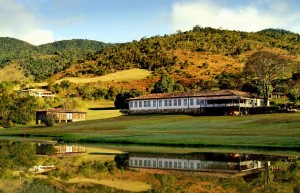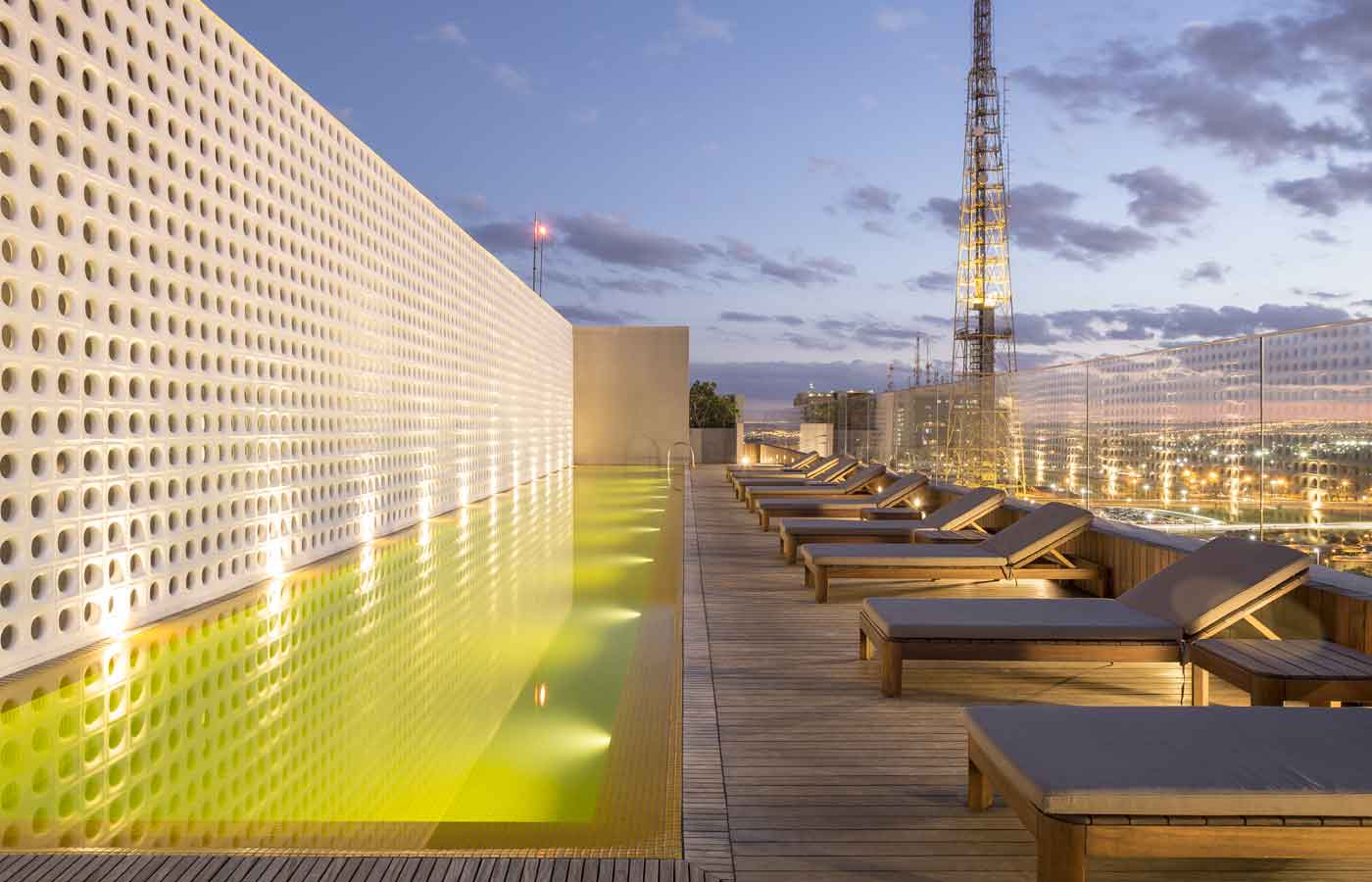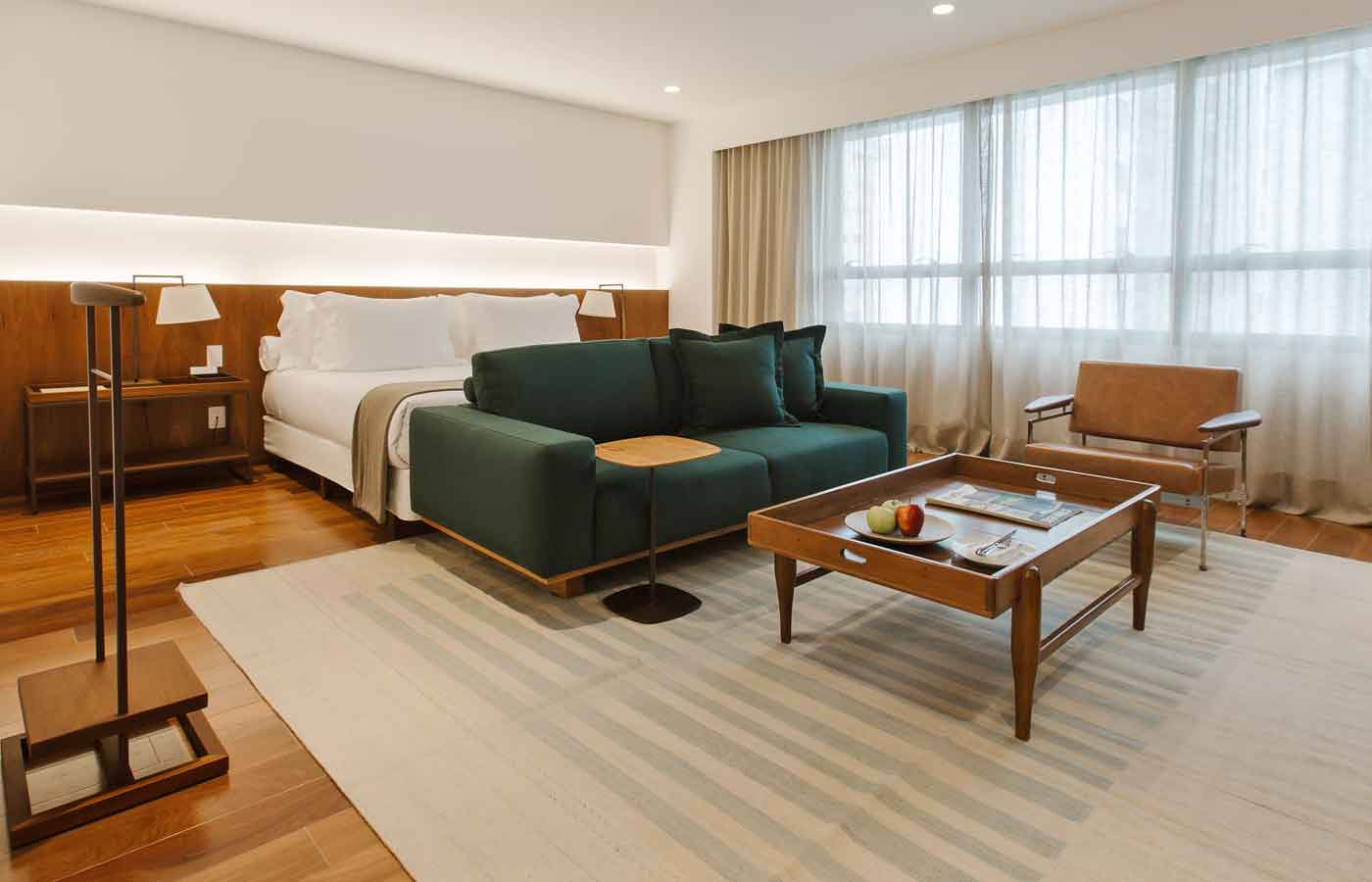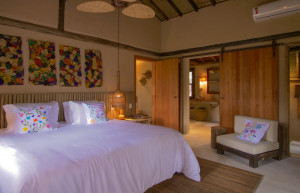MINAS GERAIS AND BRASILIA
Often neglected by tourists visiting Brazil, Minas Gerais offers the adventurous traveller a wealth of natural and urban delights more off the beaten track. Tucked inland, away from the beaches for which Brazil is most famous, Minas Gerais is a state of rolling green hills, endemic fauna and stunning waterfalls, rich in unique regional culture and colonial artistic heritage.
A hub of colonial splendour, the quaint 17th century towns that pepper the hillsides in this region owed their initial wealth to the economic boom that ensued following the discovery of gold in the mines here during the time of the Portuguese Empire. Until the last quarter of the 18th century, the mines in Minas were the source of over 50% of all the gold in the world. Having long been an influential city within Brazil, the Minas state capital, Belo Horizonte, is beginning to garner some international acclaim. Known as the ‘capital nacional dos botecos’ – (‘the national bars capital’), due to the fact it boasts more bars per capita than any large city in Brazil, Belo Horizonte is a city where people work hard, but play harder. As well as bustling nightlife, the city and its suburbs are home to numerous important parks, monuments and museums including the Instituto de Arte Contemporânea Inhotim, situated just outside the city and one of the most celebrated contemporary art institutions in the whole of Latin America. The real attraction of Minas Gerais however, is not its state capital but instead the state capitals of year gone by. Ouro Preto and Mariana both served as the state capital at one point in their history and together with Tiradentes, Congonhas, Diamantina and São João del-Rei, make up a group of colonial towns gathered along the Estrada Real, an old royal trade route for gold and diamonds, where baroque architecture of the highest quality and exquisitely ornamented colonial churches reign supreme. Ouro Preto, its name meaning ‘Black Gold’, boasts exceptionally pretty churches and a lovely old town with a laid-back vibe, frozen in time. The Praça Minas Gerais in Mariana is a stunning example of excellently preserved baroque design with the Casa da Câmara e Cadeira, the Church of São Francisco and the Church of Our Lady of Carmo all nestled around an old colonial town square.
For those interested in early modern art, the Igreja Nossa Senhora do Rosário dos Pretos in Tiradentes exhibits vaulted ceilings decorated with precious religious frescos and the Museum of Sacred Art in São João del-Rei hosts a varied collection of devotional artefacts from the colonial era. Built during 41 months as part of President Juscelino Kubitschek’s plan to achieve ’fifty years of prosperity in five’ for Brazil, the country’s sprawling administrative capital is a city that defies all conventionality. Constructed in the middle of plains land, miles from the nearest natural source of water – this modernist pièce de résistance is a mind-blowing feat of engineering and modern artistic ambition. Recognised by UNESCO for its unique and daring modernist aesthetic in addition to the artistic playfulness of its urban planning, Brasilia was planned and developed by Lúcio Costa and Brazil’s most famous architect, Oscar Niemeyer. The architectural masterpieces of this futuristic metropolis are the Palácio da Alvorada, the official residence of the President of Brazil, the Palácio do Planalto, the Juscelino Kubitschek Bridge and the bizarre, tipi-like Cathedral. In total contrast to the harsh modernist angles of Brasilia’s urban jungle of metal and glass, upon undertaking a three hour drive out of the city, you will find yourself in another of Brazil’s vast and unspoilt wildernesses. Chapada dos Veadeiros is one of Brazil’s best-kept secrets; a sweeping expanse of rocky gorges, canyons, rivers valleys, striking waterfalls and red-hued cliffs carpeted with high-altitude ‘cerrado’ savannah vegetation. When the sunlight catches the imposing rock formations of this UNESCO World Heritage Site, they appear practically luminous, owing to the high quartz crystal content in the stone. Particular highlights of this region of exceptional natural beauty are the ‘Saltos do Rio Preto’ – two incredible waterfalls at 80 and 120 metres high, the Vale da Lua (‘Valley of the Moon’) – a surreal lunar landscape crafted by the movements of the São Miguel river, and finally, the Park’s unique and rare wildlife including the maned wolf, the greater rhea, the mysterious jaguar and various species of deer and hawks.
WHERE TO STAY
Our favourite luxury hotels

Reserva do Ibitipoca
The Comuna do Ibitipoca is a wonderful private preservation project set in a beautiful 4000 hectare area of countryside and containing one of Latin America’s finest small hotels, perfect for a luxury retreat within nature. The Comuna do Ibitipoca offers visitors a slice of luxury in the Brazilian countryside, and is just a 3 hour drive from the dazzling city of Rio de Janeiro. Located at the junction of the Mantiquira Mountains, in the southeast of Minas Gerais state, the reserve enables guests to travel into authentic Brazilian history whilst enjoying an exceptionally high level of service, comfort and regional food. At the heart of the reserve is the Fazenda do Engenho, an exceptional hotel which feels very far away from the stresses of the modern world. This is a traditional farmhouse which was renovated in 2006 and dates from 1715. It has 8 wonderful guest rooms, a restaurant, spa, sauna and hydro-massage pool. For those wanting to arrive in style, the property also has a private airstrip. In an attempt to escape from the daily routine of our busy lives the suites do not contain televisions so that a stay whilst on holiday in Brazil here feels a world away from the humdrum of home. Two other houses on the property are also available, 100 metres from the main house: Carlinhos, with 3 suites – perfect for families or small groups of friends – and the very exclusive, 1 double bedroom Paiol. In all properties the highest level of comfort is sought for guests and every bathroom is equipped with underfloor heating and warm towels, the beds are huge and dressed with Egyptian cotton sheets and L’Occitane amenities. The Comuna do Ibitipoca is perfect for those interested in horse riding and the stable has Mangalarga and Anglo-Arabian horses for guests to set off on horseback to explore the extraordinary natural surroundings of waterfalls and mountains.
Pousada Trijuncao
One of Brazil’s best kept secrets, the Brazilian cerrado, or savannah, is one of the most biodiverse eco-systems on earth. Boasting an incredible 13,000 plant species alongside 850 birds, 251 mammals, 482 reptiles & amphibians and 1,200 fish: this natural paradise is a must see for those looking to enjoy a unique wildlife experience in Brazil. Pousada Trijuncao is located within 33,000 hectares of protected land and is accessible only via a 5-hour car journey from nearby Brasília, or a 30-minute light aircraft flight. With just seven carefully designed rooms, conceived to combine the characterful rusticity of the local area with the luxuries of modern high-end travel, the pousada offers the discerning nature-lover something utterly original. Comfortable communal spaces and the beautiful bird-filled gardens perfectly compliment the suites, each featuring a king-size bed, indulgent Natura toiletries, Trousseau robes, air-conditioning and a spacious living area. Pousada Trijuncao also offers a small pool, massage rooms and an ofuro for blissful relaxation in isolated rural surroundings. Highlights of the included activity package at Pousada Trijuncao include visiting the Grande Sertão Veredas National Park, nocturnal kayaking in search of caiman, stargazing, eco-safaris, birdwatching and visiting the maned wolf conservation project run by local NGO, Onçafari. Keep your eyes peeled throughout your stay for ocelots, rare black jaguars, maned wolves, armadillos and tapirs – enjoying the opportunity to disconnect and appreciate the majesty of Brazilian nature in supreme comfort.

B Hotel Brasilia
The opening of the brand new B Hotel in Brasilia was a much anticipated event, and now guests can finally stay here it doesn’t disappoint. Designed by the revered architect Isay Weinfeld, it is contemporary with a minimalist twist from the rooftop pool all the way down to the lobby seating. With 306 rooms, this impressive hotel has plenty of space to show off the true talent of Isay Weinfeld, and both the exterior and the interior have been styled to perfection. The luxury hotel is bright and spacious throughout, offering guests a superior gastronomic experience at the in-house restaurant (where vegetables from the hotel’s own organic garden are used) and a wonderful place to watch the sunset over the city at the rooftop pool. The rooms themselves are simple, comfortable and impeccably dressed with luxurious fabrics and handsome dark stained furniture. Each features a large window of differing size to its neighbour – part of the architectural charm instilled at the B Hotel. With plenty of shops, restaurants and other attractions just a few minutes walk away, the B Hotel is one of the best options for accommodation in the vibrant city of Brasilia.

Hotel Fasano – Belo Horizonte
Fasano Belo Horizonte is located in the colonial state of Minas Gerais, Belo Horizonte is an artistic city close to the famous botanical gardens and immersive art galleries of Inhotim. The Fasano is a brand new hotel bringing 5* luxury which the brand is famous for, plus exceptional service. With a variety of bars, shops and restaurants close by, the Fasano is perfect for those wishing to explore this relatively unknown city. Large, contemporary rooms boast complimentary WiFi, a king size bed, LCD TV, minibar, air conditioning and exquisite toiletries. Hardwood flooring and marble bathrooms add to the elegant feel of the rooms. For those wishing to make the most of their stay at the Fasano, there are some excellent facilities available for guest use, including an Italian restaurant, spa and casual bar which hosts jazz nights.




